Places: Ferrari Museum

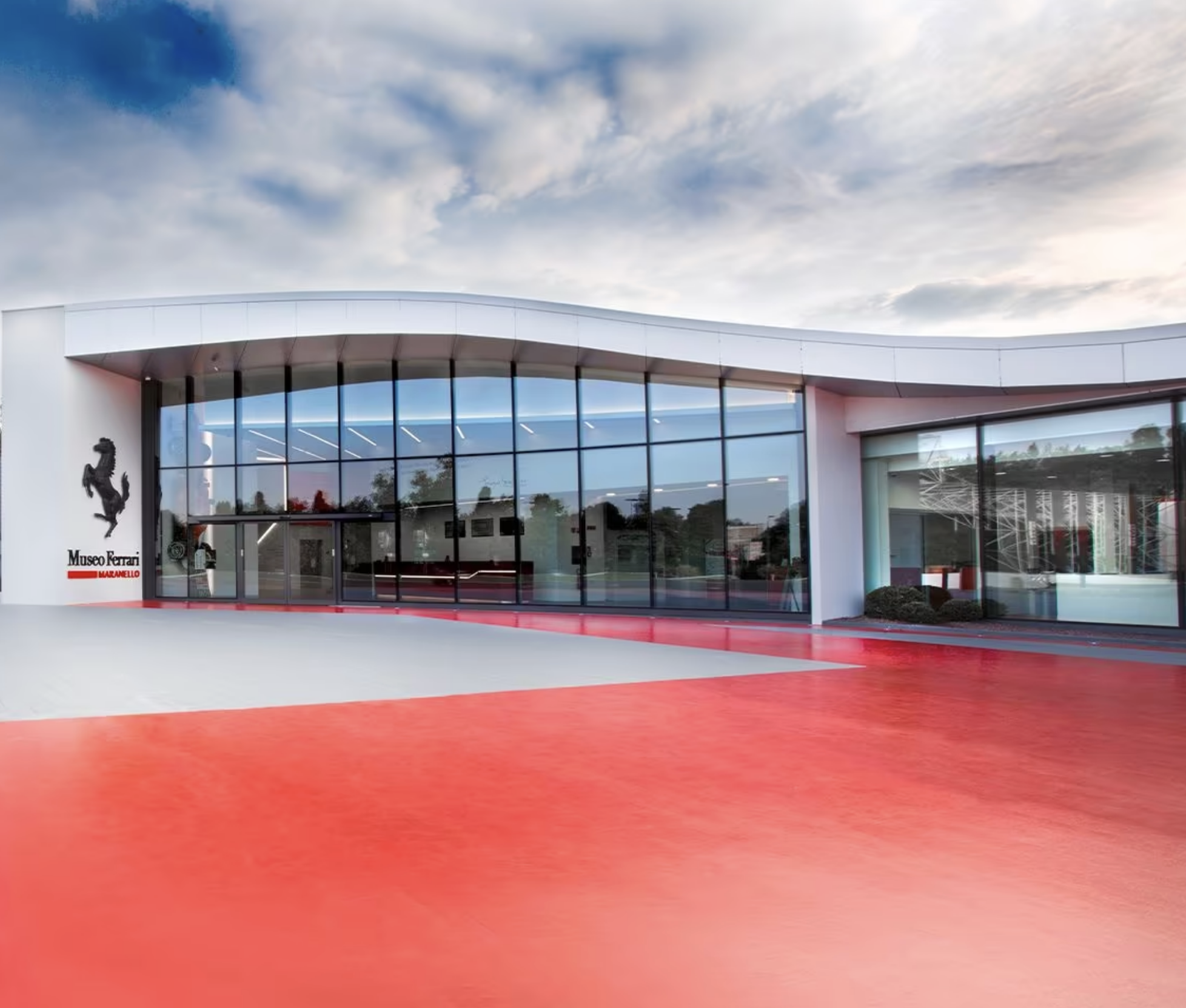
When touring Northern Italy, visiting Modena and Maranello is a sacred duty and the absolute minimum that any self-respecting petrolhead should check off their list. Traveling through the well-connected regions of Lombardy and Emilia-Romagna, you can feel the omnipresent spirit of Italian automotive culture. Pagani, Maserati, Alfa Romeo, Dallara, Ducati, Moto Guzzi, Lamborghini, and of course Ferrari – all these brands originate from this part of Italy. I’ve had the pleasure of visiting this area several times, and I’d like to share with you what to expect when visiting Maranello, home to the Ferrari factory and one of its museums – the Galleria Ferrari.
Already on the way, when the directional signs with "Maranello" appear, your heartbeat quickens. The surrounding area is industrial, flat, and nothing particularly special. It’s unclear what to expect. A few kilometers before the factory, I spotted a Ferrari test driver in my rearview mirror during a road test of the 812 Superfast – this is standard practice. Every car produced in Maranello takes a lap around the surrounding hills and highways to ensure everything is working properly.
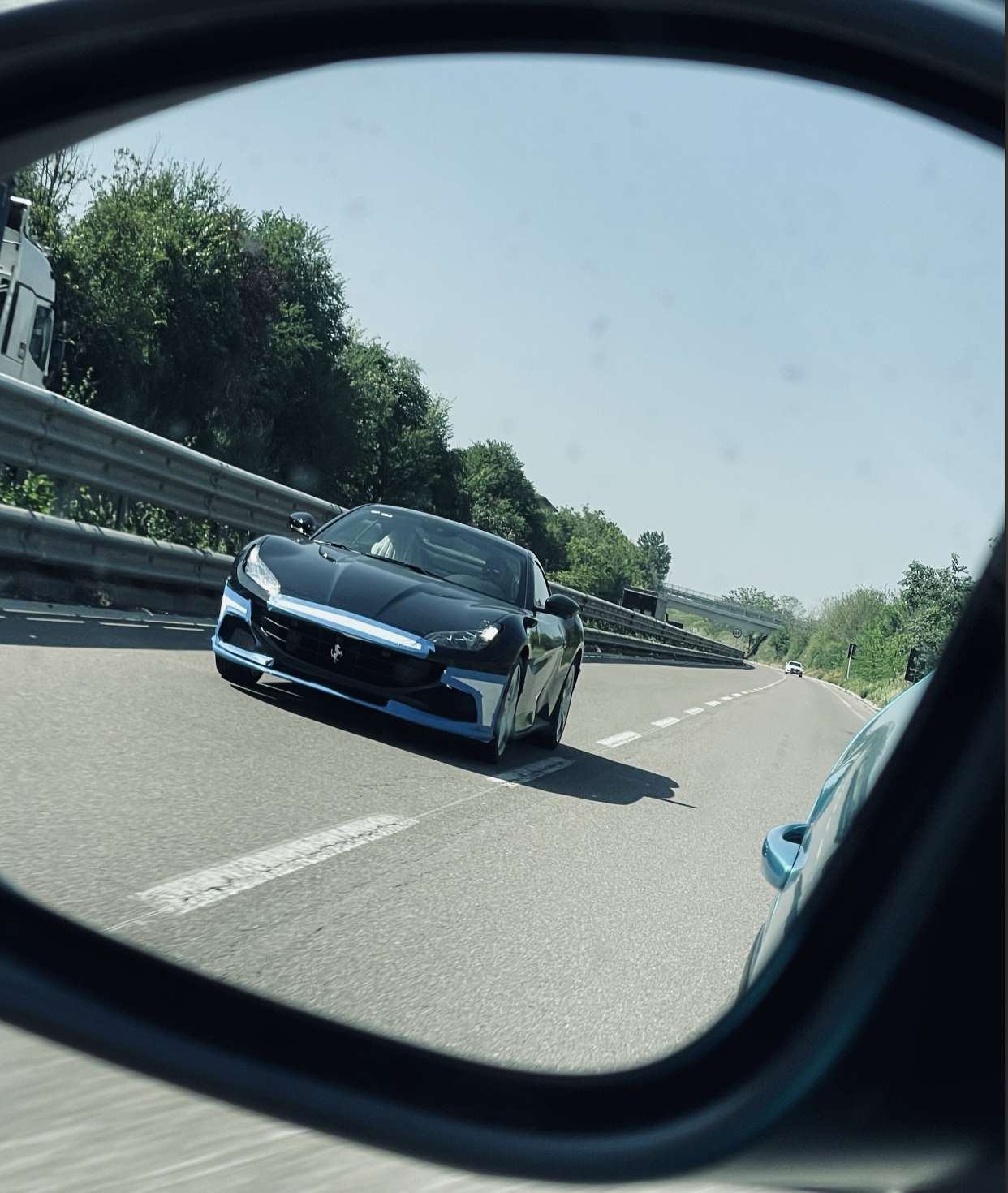
In the picture, the Ferrari Portofino, which I captured after the meeting with the 812.
Since I was driving in the left lane, I could see the wide and low nose of the 812, covered in protective film, slowly yet decisively catching up with my rental compact car. Out of respect for the brand, I immediately made room, hoping for a chance to experience the beauty of Italian design and, most importantly, to hear the symphony of the V12. The test driver apparently noticed that, by yielding, I lowered the window in my car. As he accelerated during the maneuver, he “coincidentally” timed the gear shift so that the engine revs were near the limiter, and the exhaust tip powered by the twelve-cylinder engine was exactly at ear level. The result was a momentary deafness from the air-shattering roar, accompanied by a gunshot-like noise as he shifted gears. A beautiful experience, worth every dead hearing cell.
The closer you get to the destination, the more red there is – red cars and buildings proudly displaying the logo with the prancing horse. Depending on the direction from which you approach, you can see distinctive buildings: one of them is supposedly shaped like an engine, housing an aerodynamic tunnel; another – red and black with rounded edges, resembling an office building, where Ferrari's F1 department has its simulator. There's also the famous old gate of the Ferrari factory, now home to the Ferrari Classiche Department, where the company can completely rebuild any existing model from scratch in case of an accident or other misfortune.
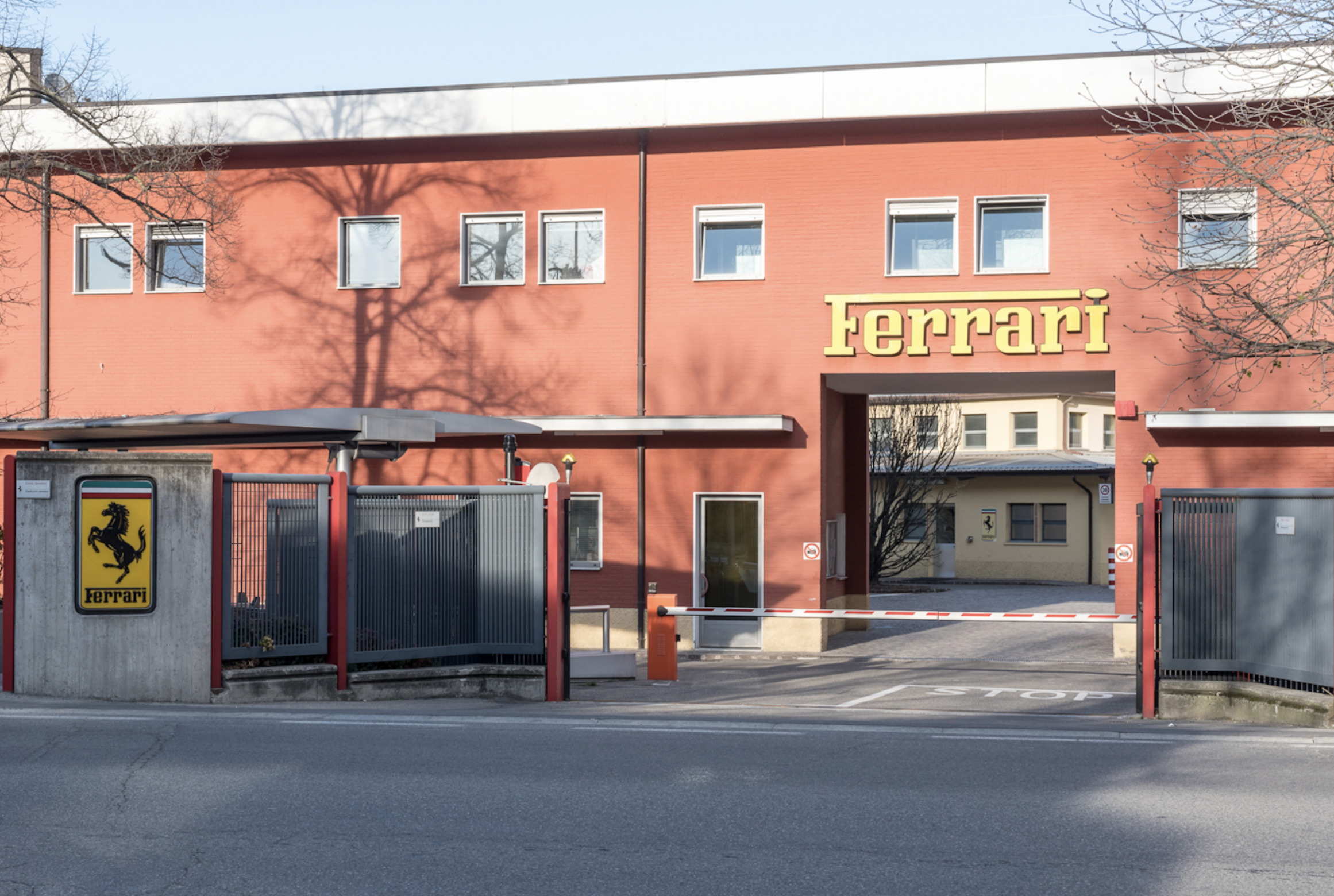
After parking the car, I find myself in the heart of the Italian automotive world, completely unprepared for the upcoming experiences. The Ferraris moving around the car outnumber the civilian ones – completely the opposite of the outside world. From afar, the Italian song of eight and twelve cylinders fills the air, and before my eyes, the F2004 Formula 1 car is immersed in a spacious installation made of rods.
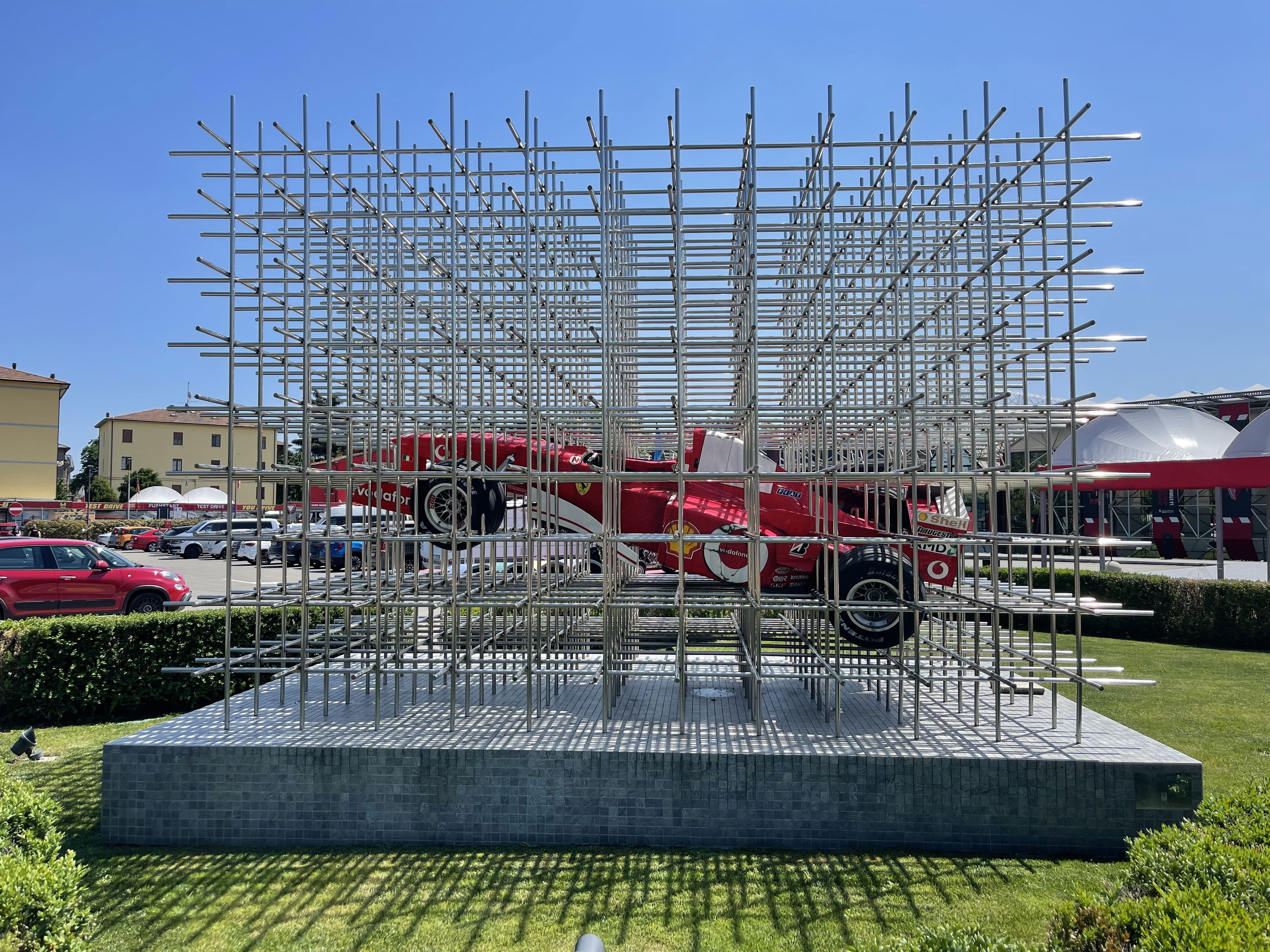
Right before the entrance, there's a Ferrari café serving delicious espresso and cornetti, and once you enter the lobby, an F1 car is displayed on the wall. After purchasing tickets, you can head up the stairs to explore the exhibition.
During my visit, the first section showcased the body production process – I could admire a comparison between the bare aluminum body of the 1963 250 LM and the 812 GTS from the contemporary production line.
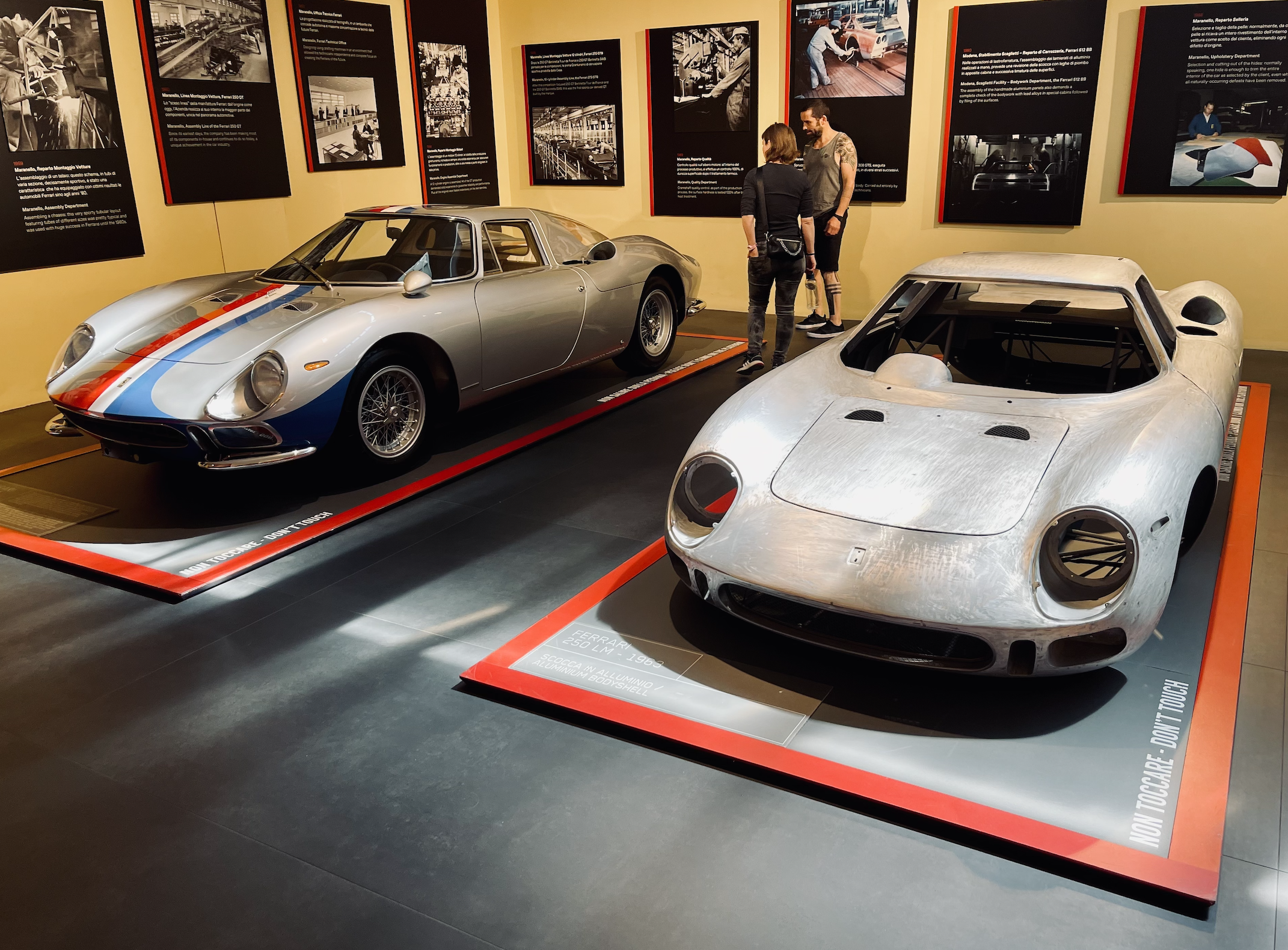
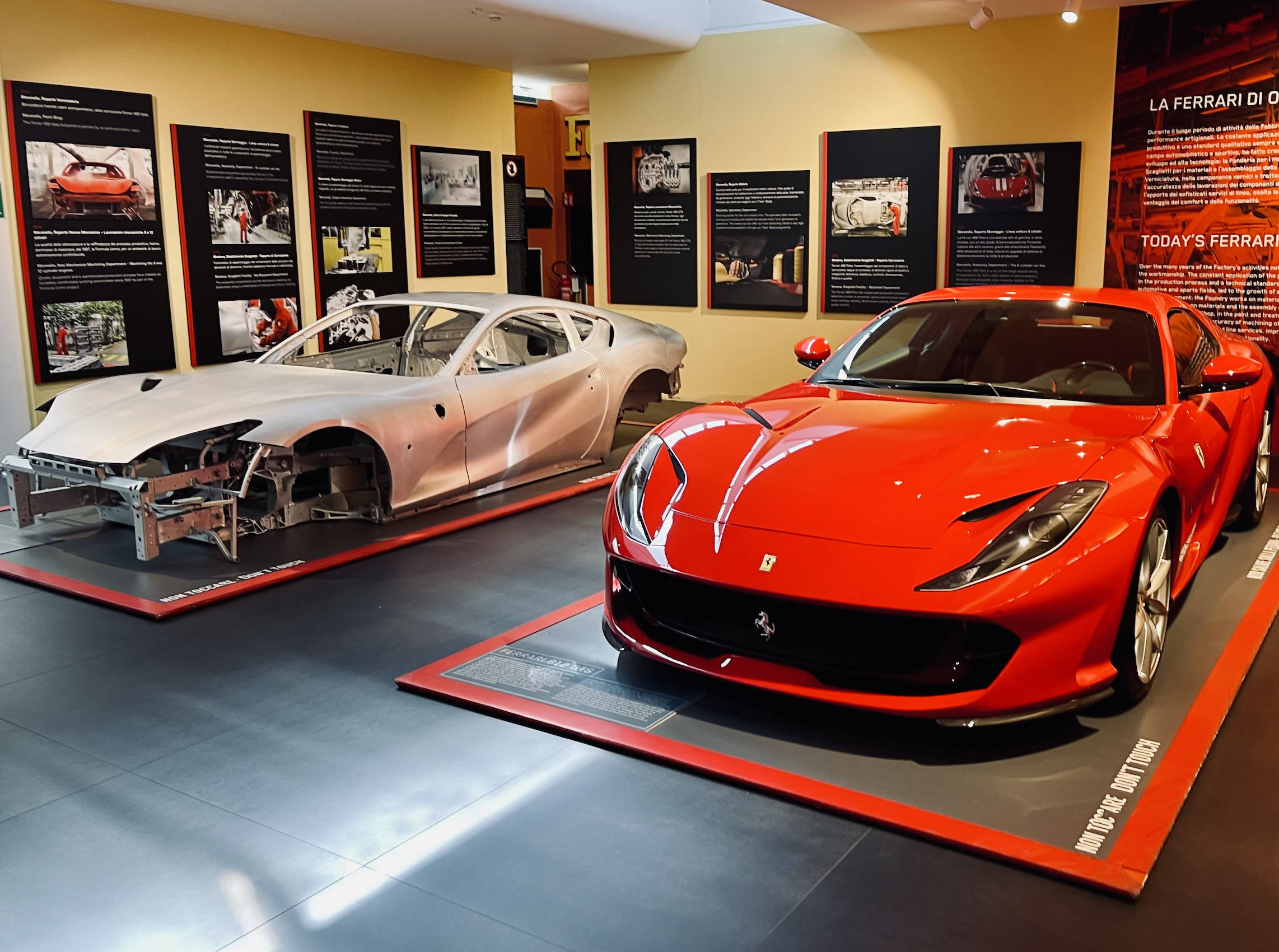
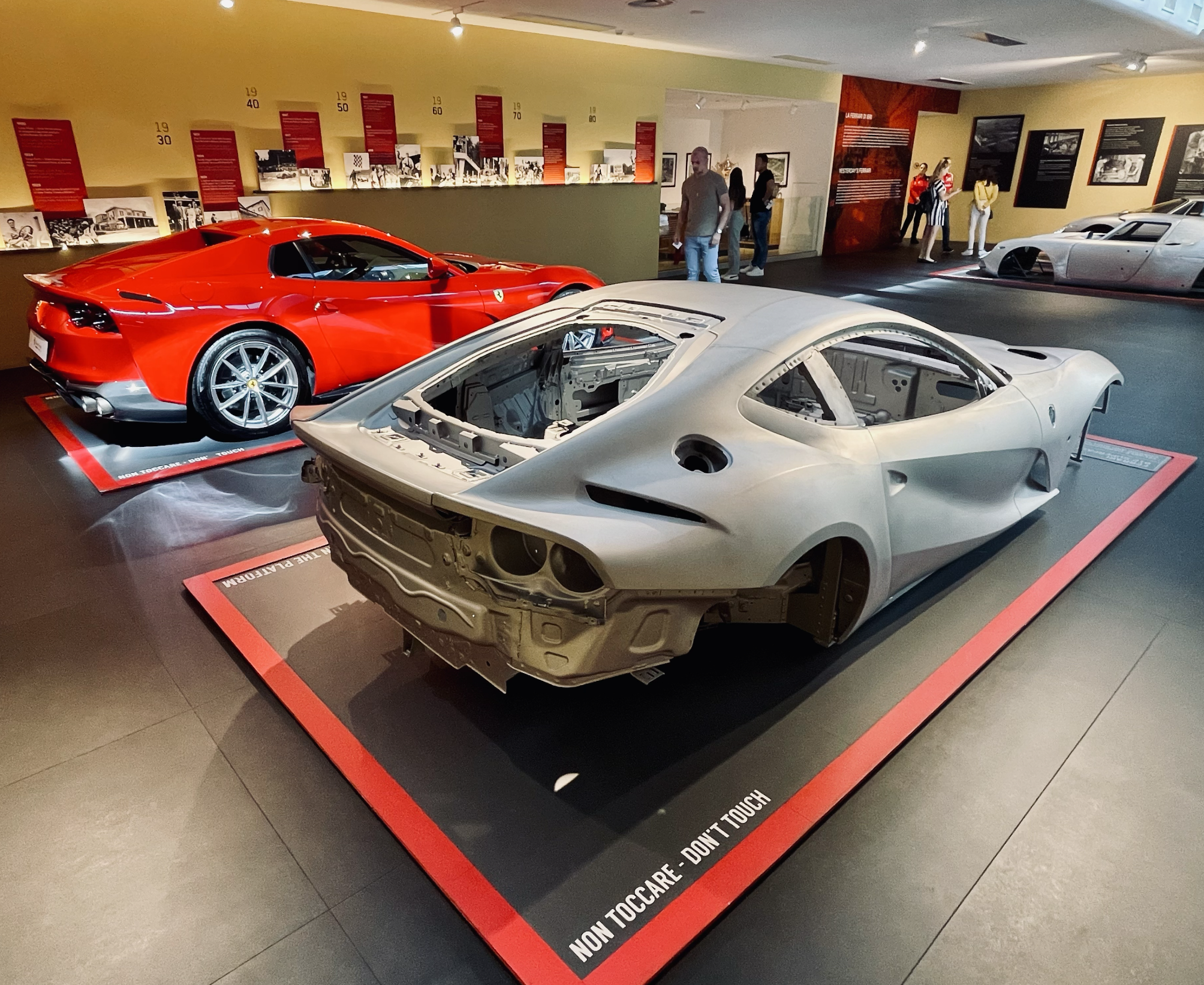
As I moved further, I had the pleasure of getting an up-close look at all the brand's "Greatest Hits": the 288 GTO, F40, F50, Enzo, and LaFerrari (including the FXX-K). At this stage, aside from my heart racing, I wasn’t sure where to focus – my gaze jumped from detail to detail, trying to read the plaques, only to spot another car or fascinating feature. After a while, I noticed that next to each car, its heart was displayed – so I could examine each engine closely. The sensation of being a child in a toy store gained a whole new depth, and the butterflies in my stomach, long dormant, fluttered to life once again, just like they did at Christmas when I was a lot younger. It was an unforgettable experience!
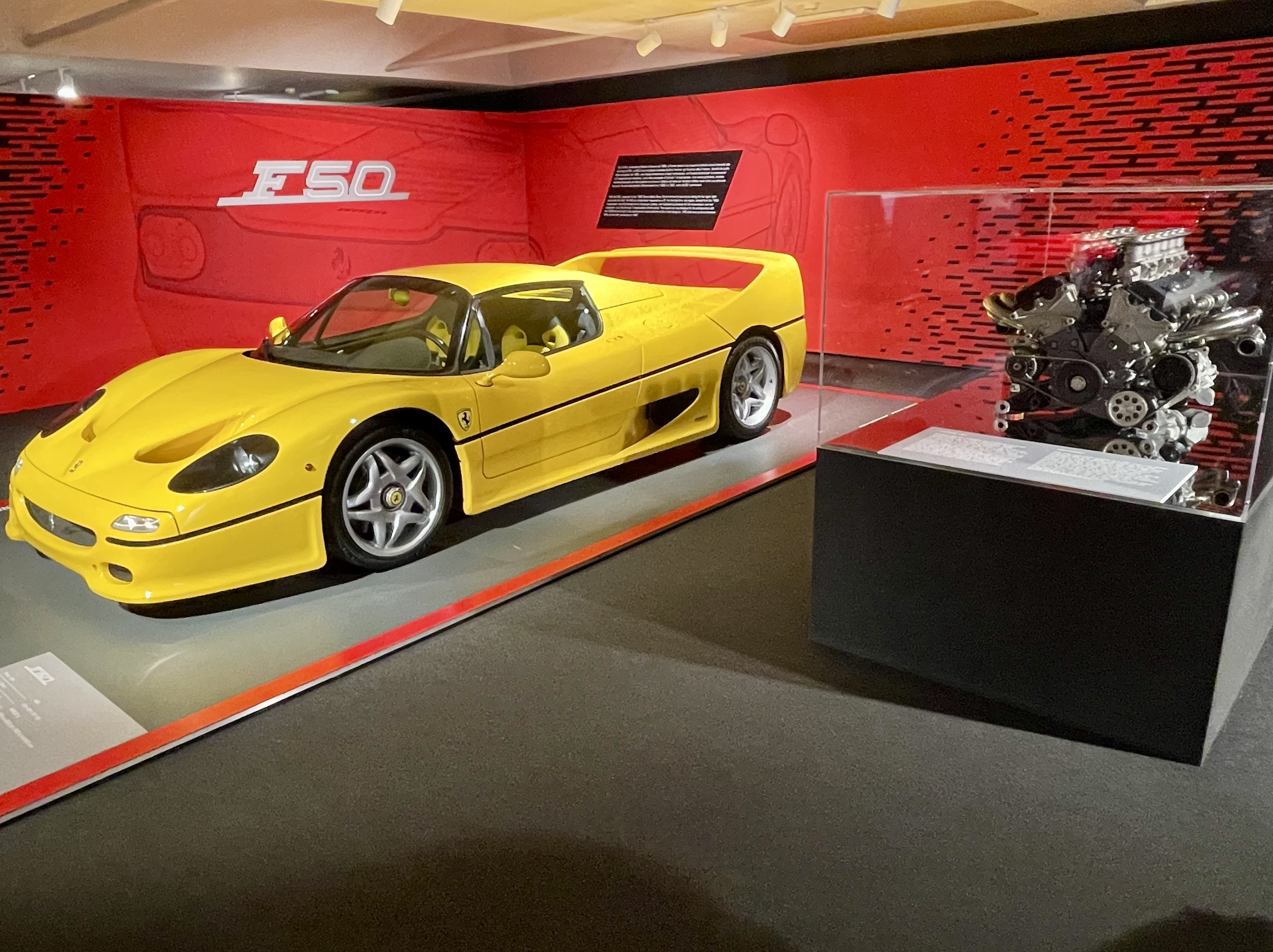

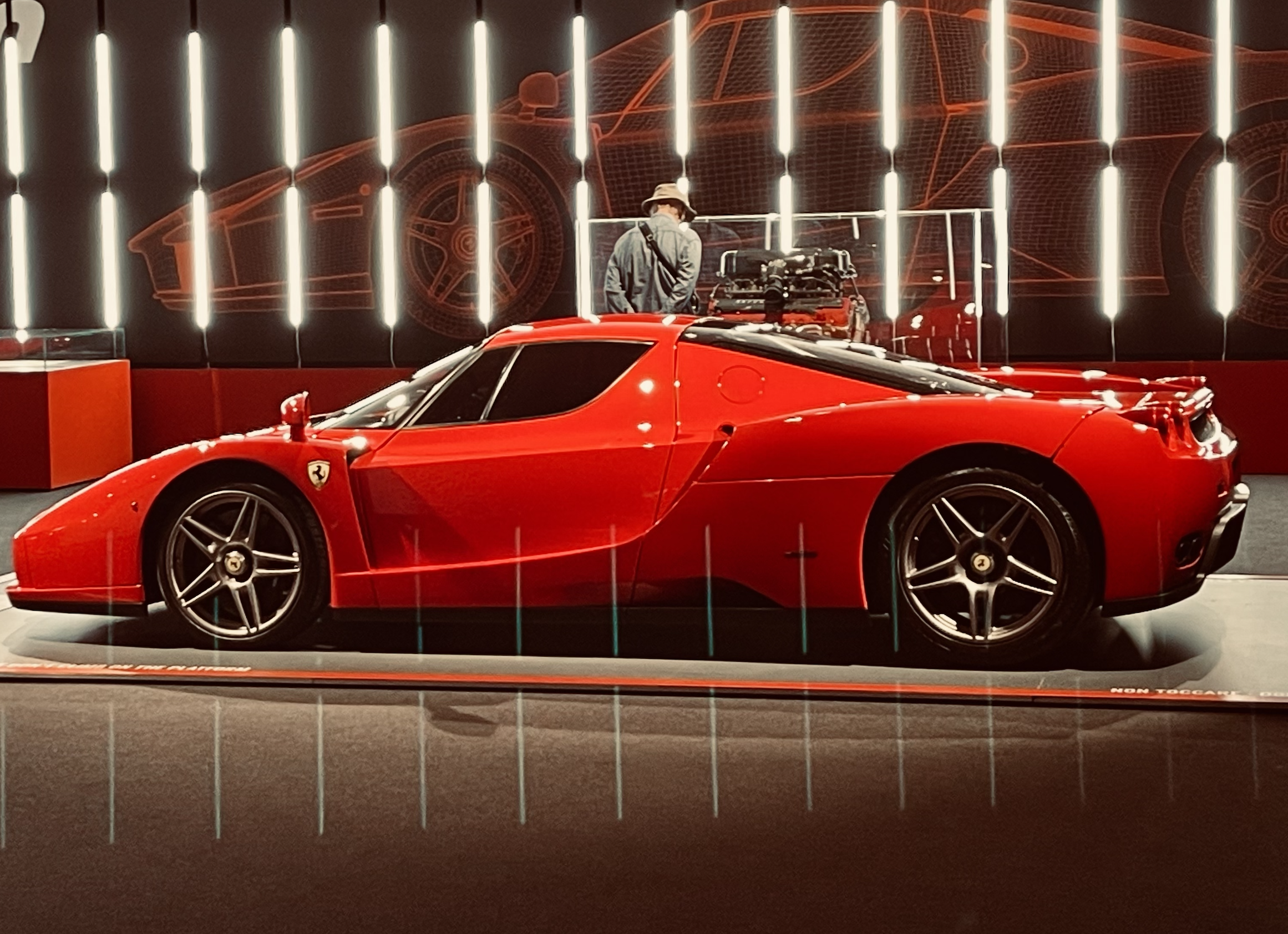
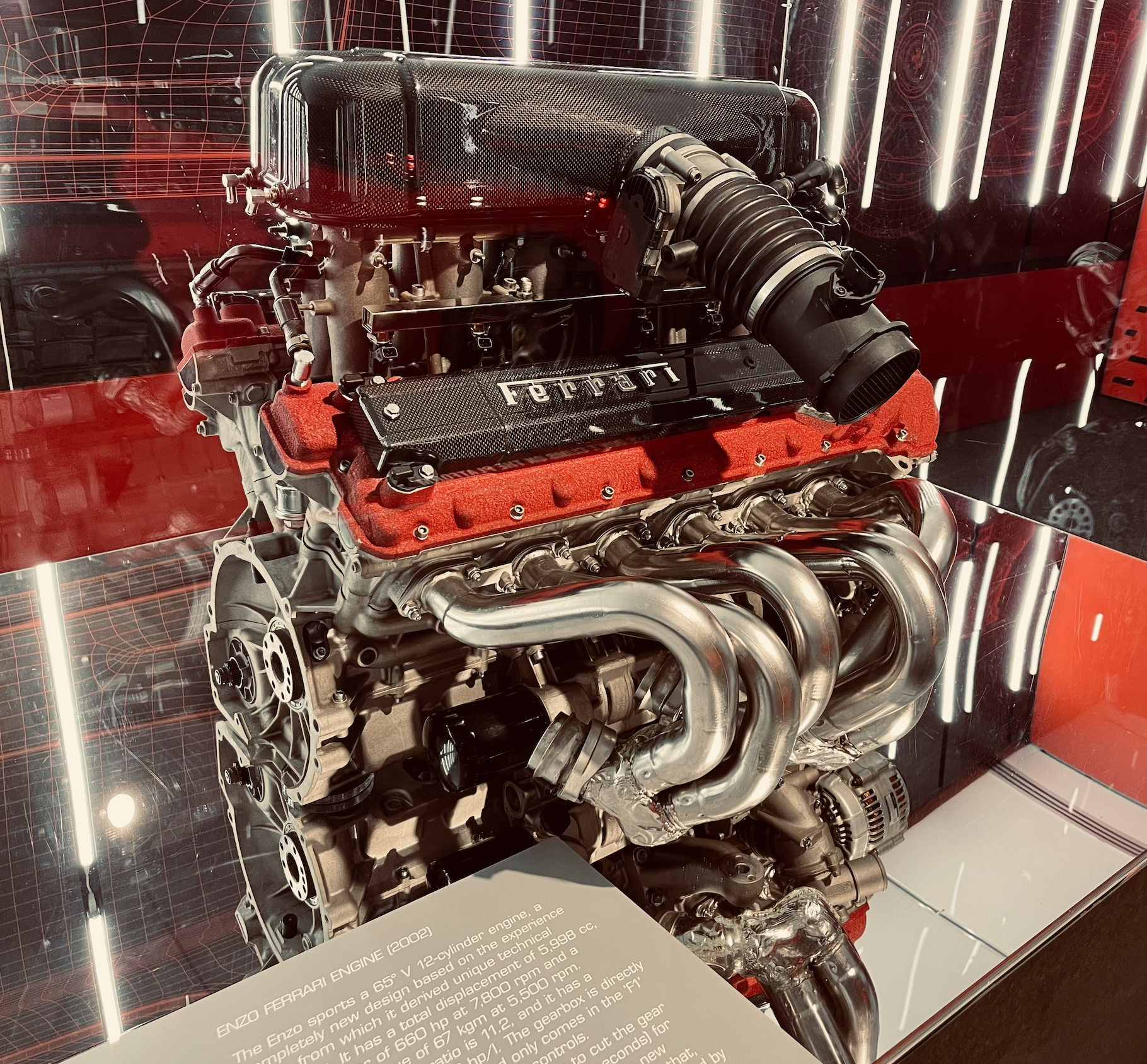

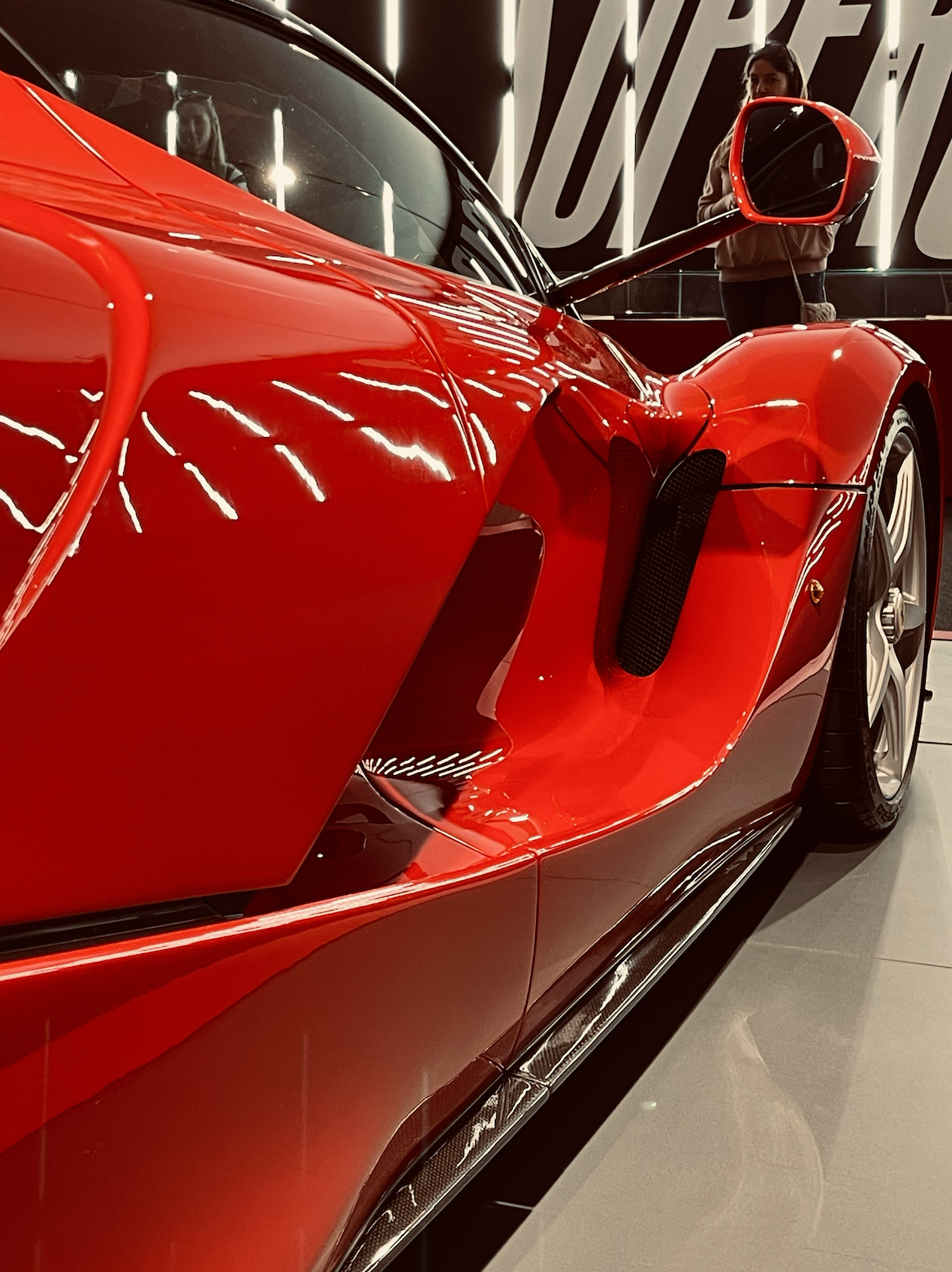
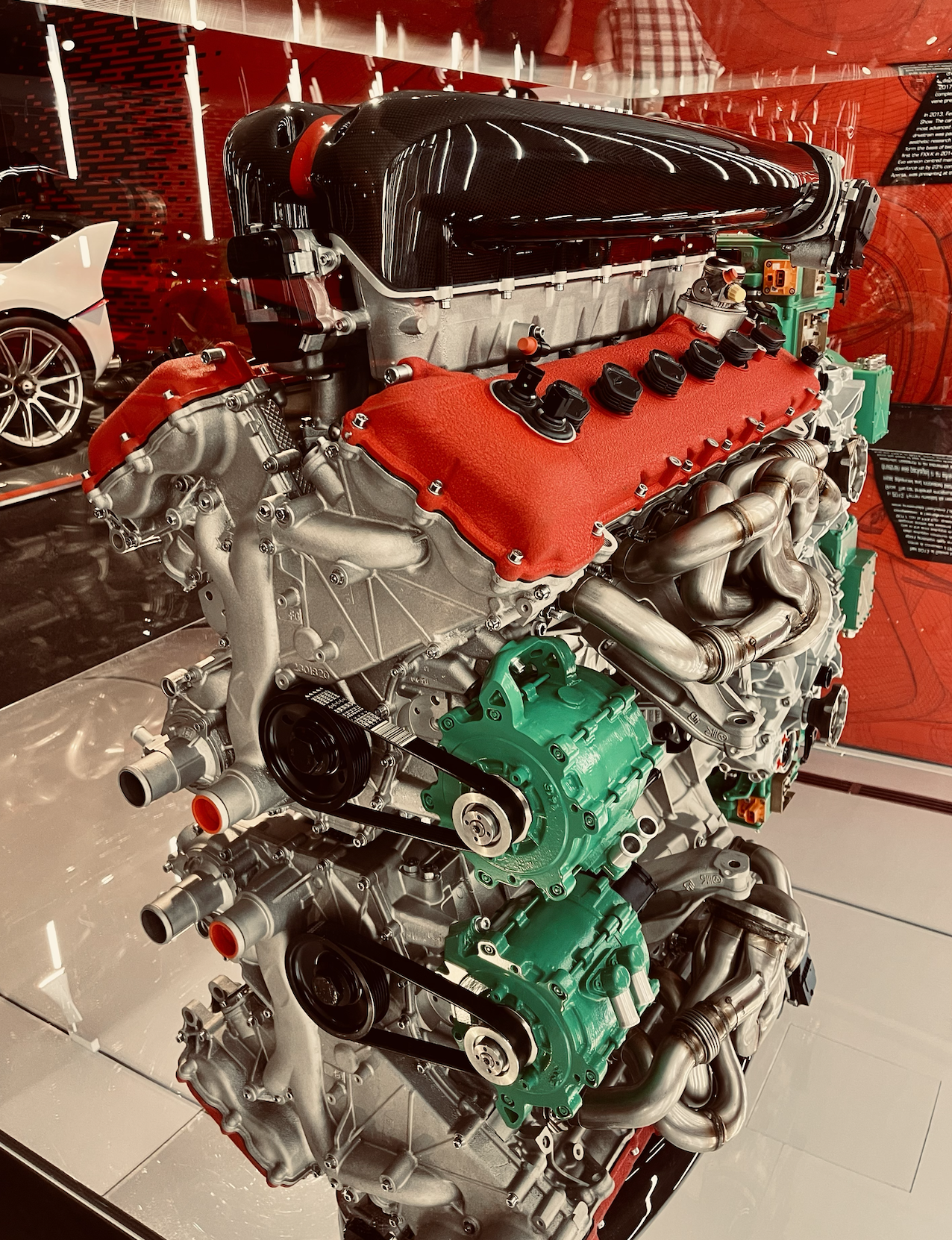
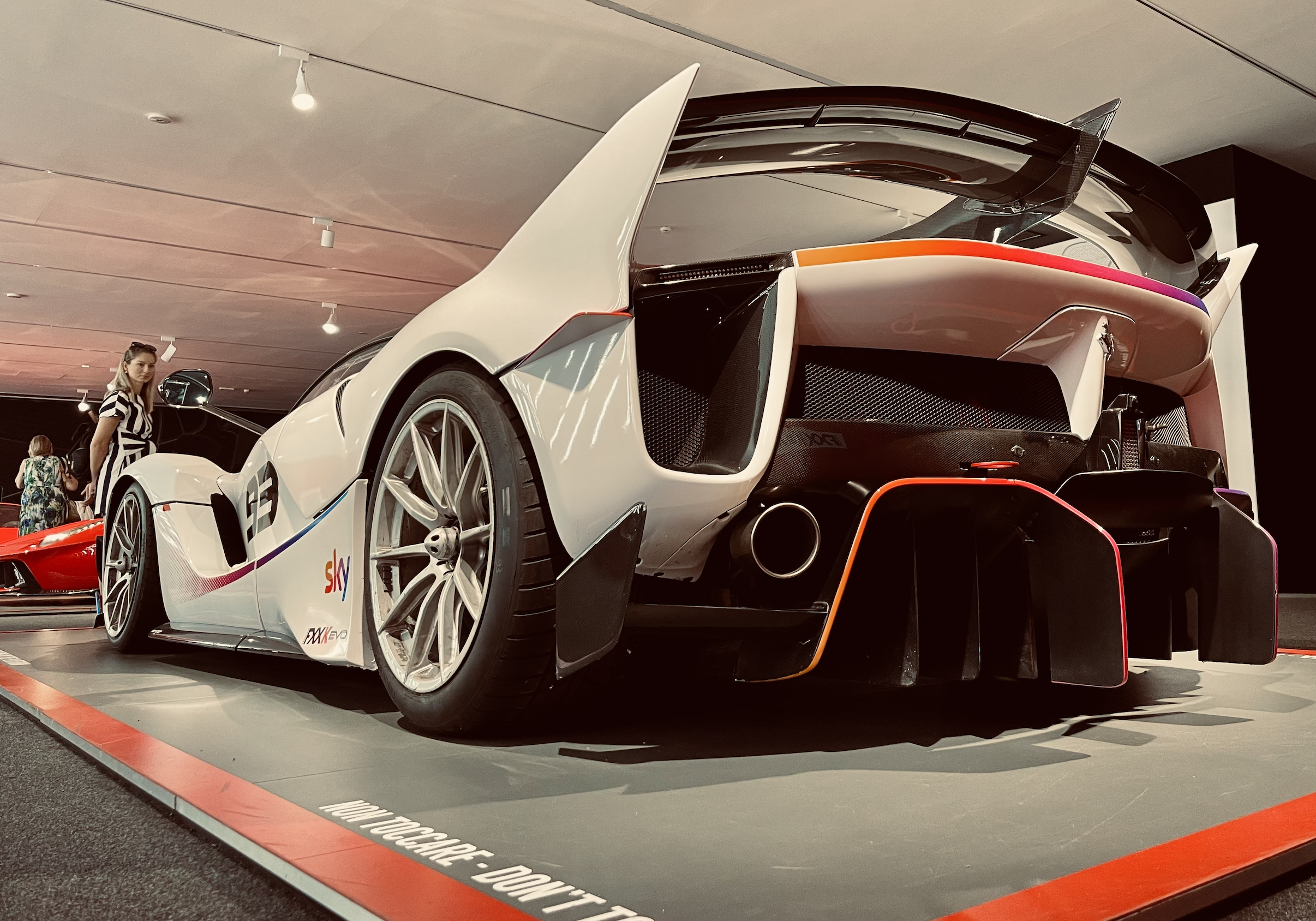
I had never before had the chance to see any of these cars in person, and now they were just a few meters away from each other, with their engines displayed in showcases. The F50, once my favorite car, which my parents gifted me in various sizes and versions, was right in front of me. I had all the time I needed to delve into its details. The stunning wheels, air intakes and exhausts, the push-rod suspension, the gearbox located behind the rear axle, and the completely exposed V12 engine, with its carbon airbox visible through the transparent engine cover and the mesh in the rear bumper. Incredible details!

As I continued, I passed by a fully personalized F12 TDF, complete with an installation detailing the various customization options available.
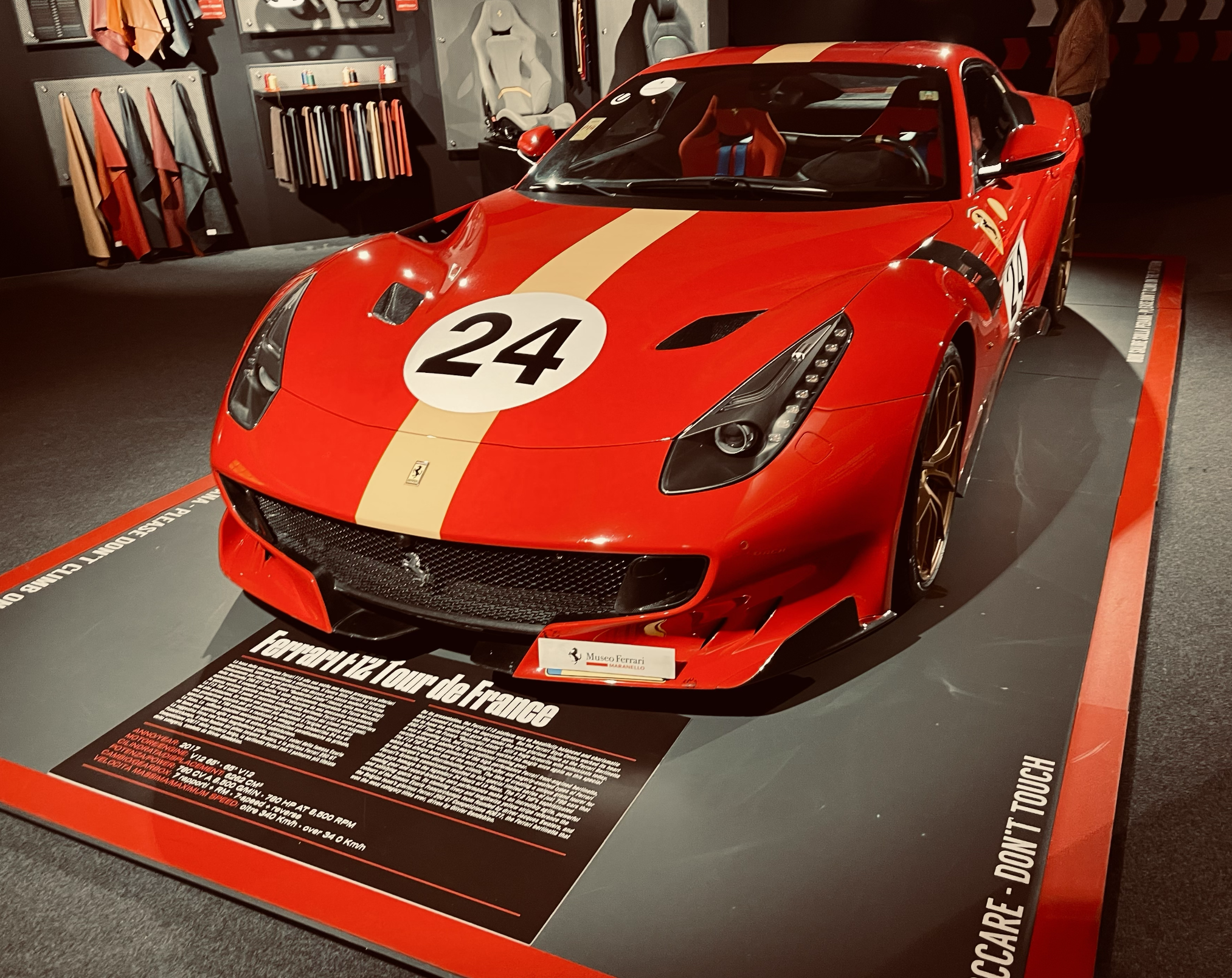
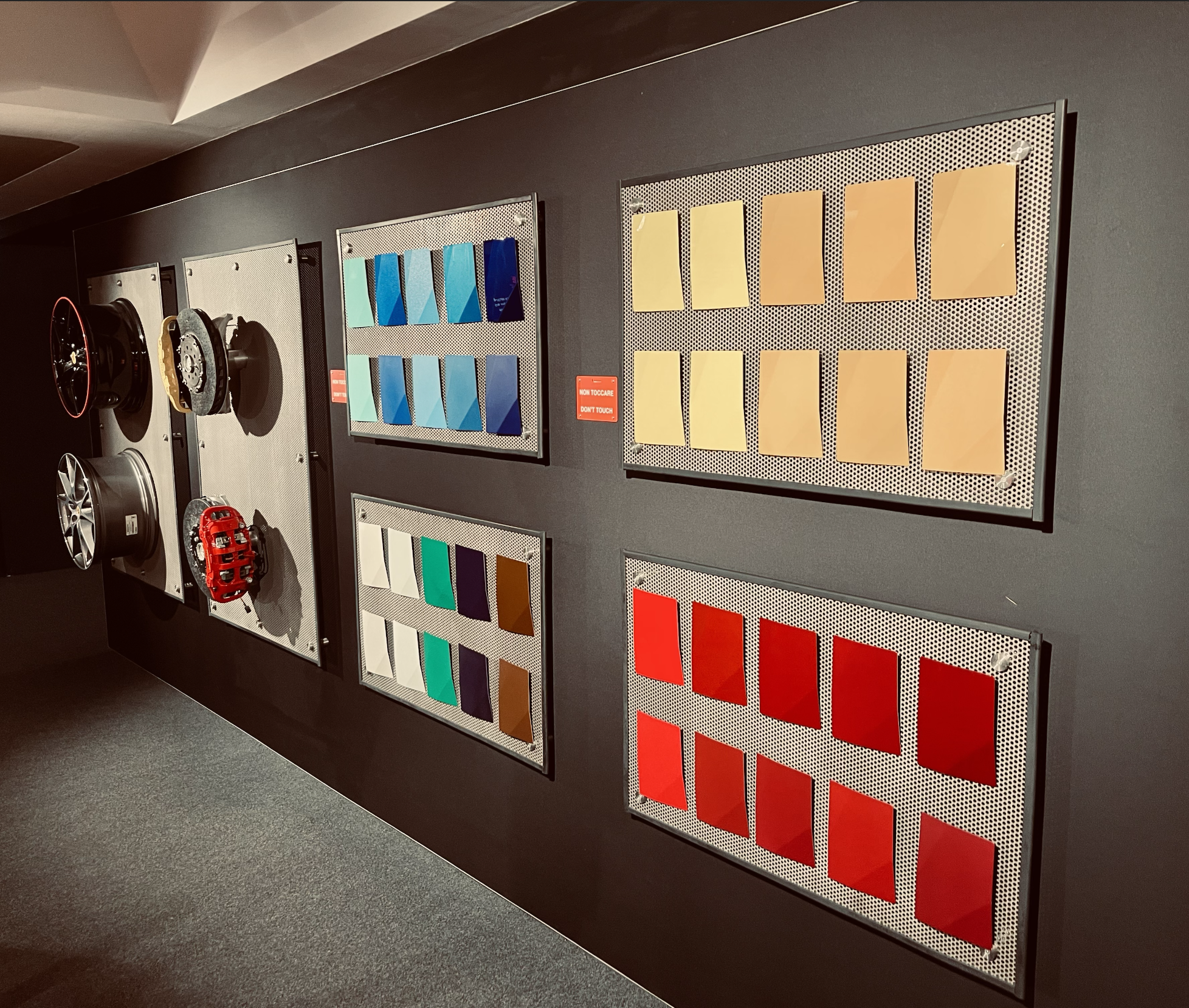
In the next room, parked is the P80/C – a one-off car produced in 2019 at the request of a client. Without the need for road homologation or adherence to racing class regulations, the engineers were free to let their creativity soar and create such an extraordinary example. On the surrounding walls, illustrations and a detailed description of its creation history are available.
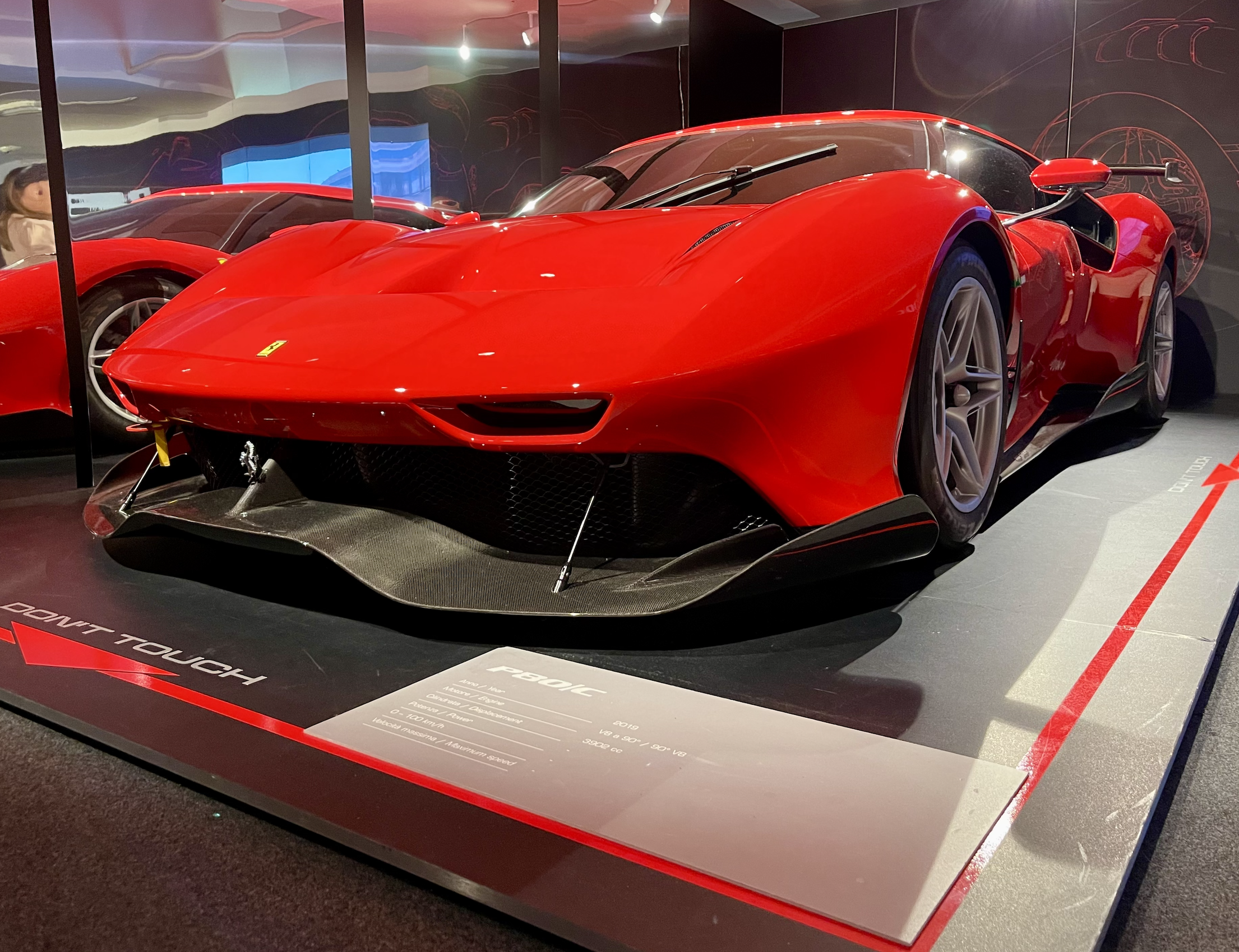

As I head toward the stairs to the lower level, I pass a Formula 1 engine displayed on a pedestal, practically tucked into a corner. The eight-cylinder unit catches attention with its very compact size – only slightly larger than a four-cylinder engine from a Golf – and with intricate details like exposed throttle bodies and a beautiful exhaust manifold that resembles a wind instrument. A glance at the plaque reveals that this is the Tipo 056 V8, with a displacement of 2398 cm³, from a car that raced between 2006 and 2013, producing over 750 horsepower at 19,000 rpm. This engine comes from the days when Schumacher and Massa drove for Ferrari. And that's it – it just sits there. There's no one around, so you can (though not really) touch the carbon airbox or nudge the throttle body with your finger. After a moment of reflection and admiration, though I don't particularly want to, it's time to see what I'll find around the corner.
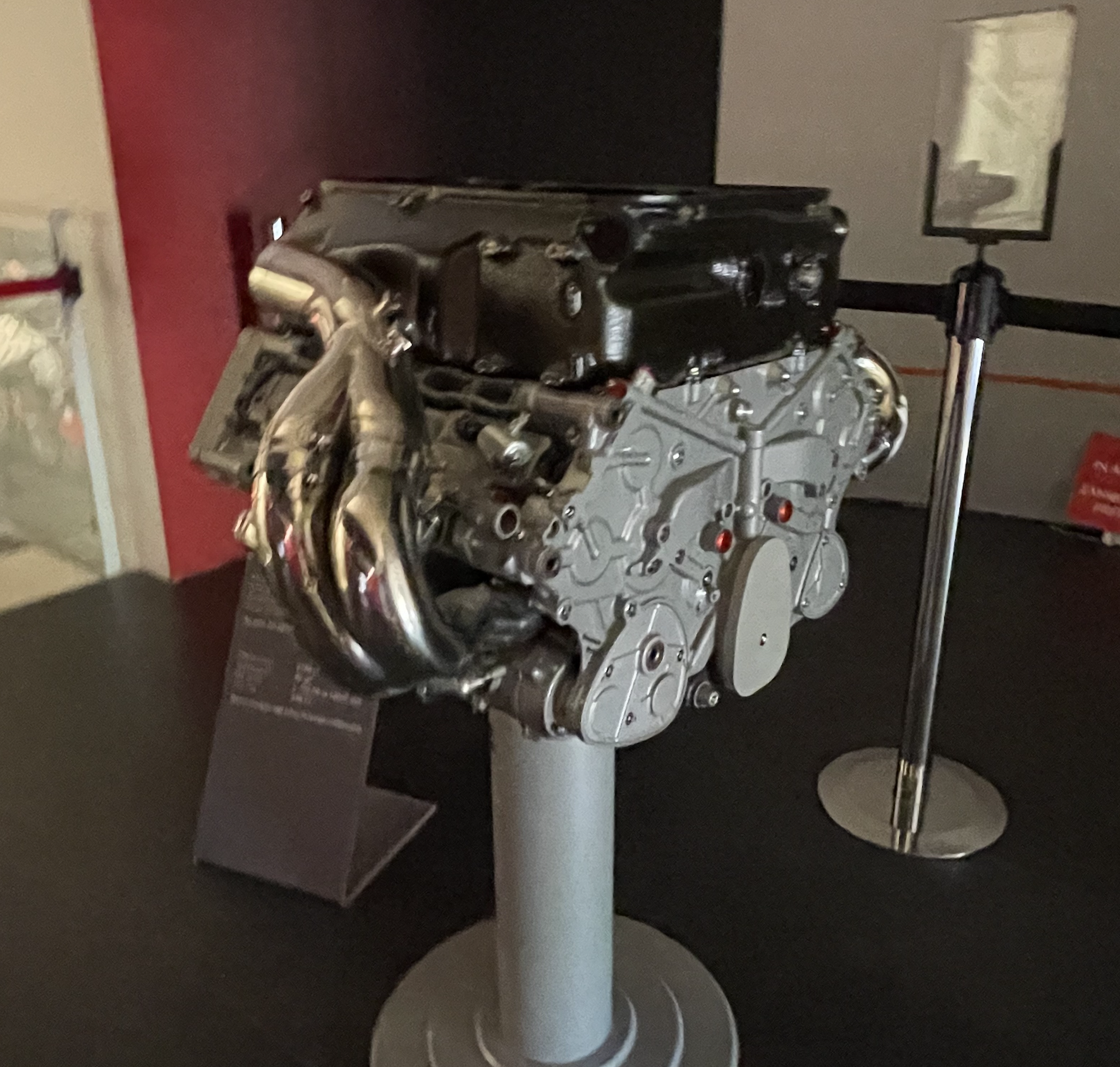
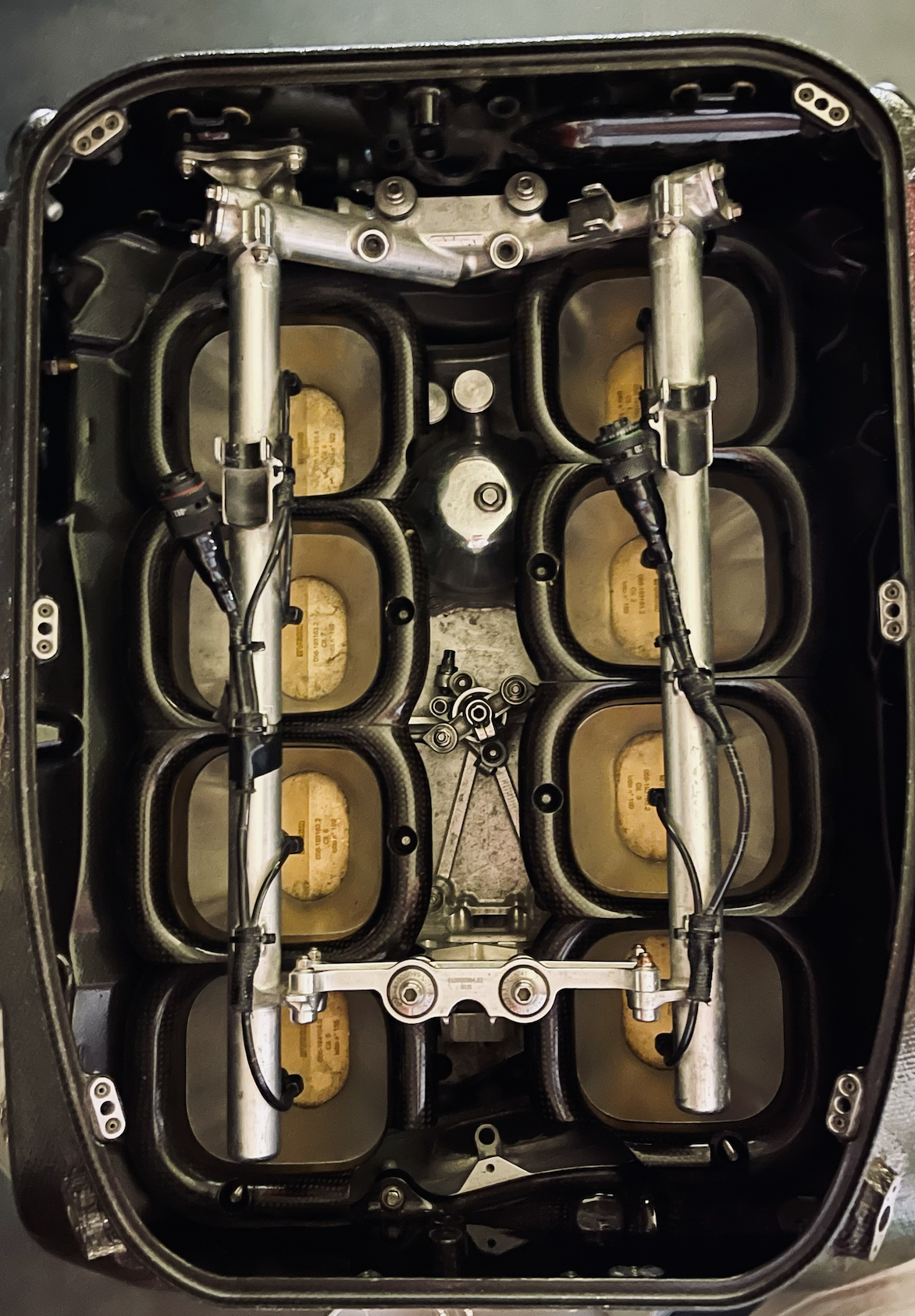
Next, I encounter a plaque displaying the track records for Fiorano, with names like Lauda, Scheckter, Villeneuve, Arnoux, Mansell, Prost, Alesi, Irvine, and of course, Schumacher. The plaque leads to a room that describes the Fiorano track, its functions, and its characteristics.
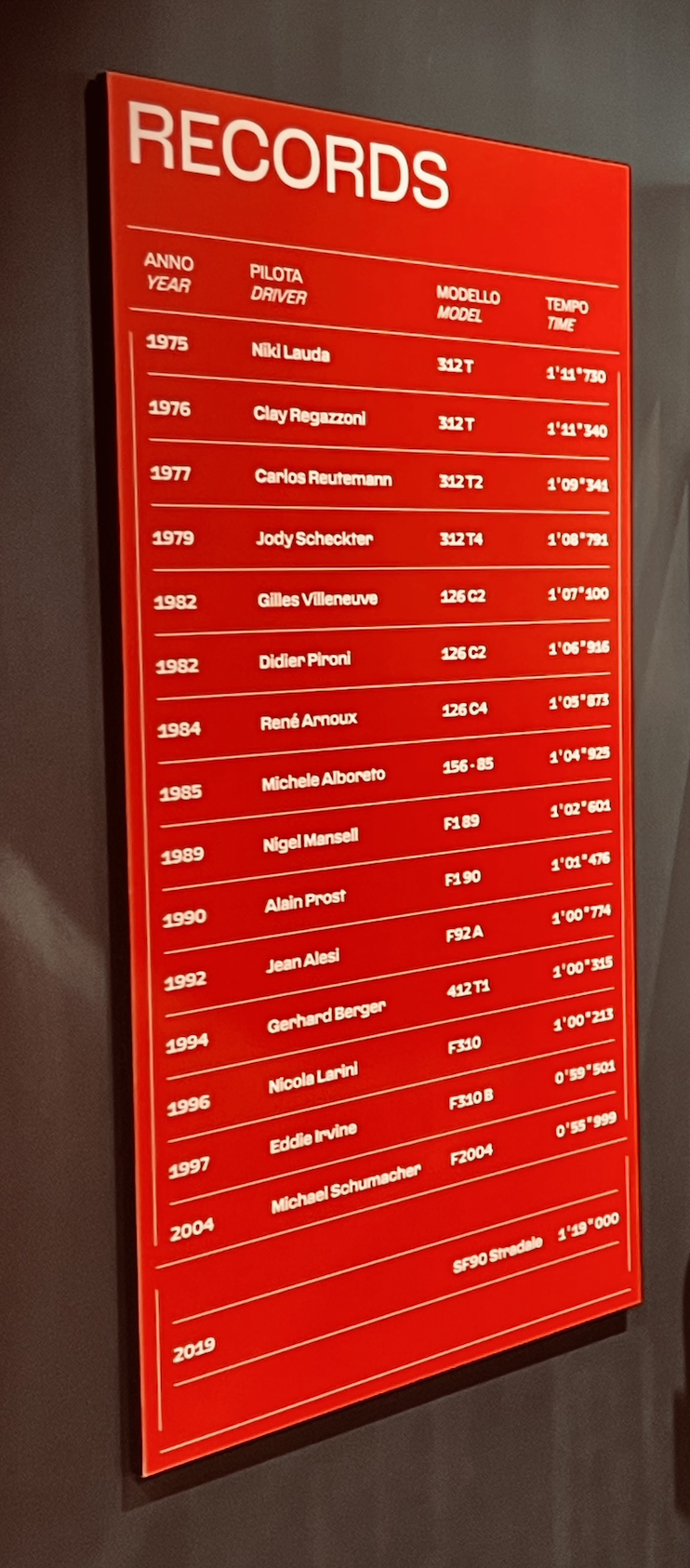
Interestingly, Fiorano was designed as a collection of characteristic sections from tracks around the world, each segment intended to test the dynamic behavior of the chassis, allowing any deficiencies in the car to be identified. When Enzo Ferrari opened Fiorano, his goal was for every car – whether race or road – to leave the factory having passed the Fiorano test "with flying colours."
My heart beats fast and strong – quite a lot for one place. It turns out that everything associated with Ferrari, its legend, and craftsmanship, is not just an internet or TV fairytale. Although I never doubted it, being here in Maranello, seeing it with my own eyes, experiencing it firsthand, and being surrounded by red, allows me to reinterpret the global phenomenon of the brand. It's an impressive legacy. The pinnacle of technology, automotive hi-tech in its purest and most proper form, described and presented in the smallest details.
And the F1 cars? After all, Ferrari wouldn’t exist without Formula 1. A record 16 constructors' titles, 15 world championships won by their drivers, 70 F1 car models built (if I’m counting correctly). There's a lot to show, so where are they all if not in the museum?
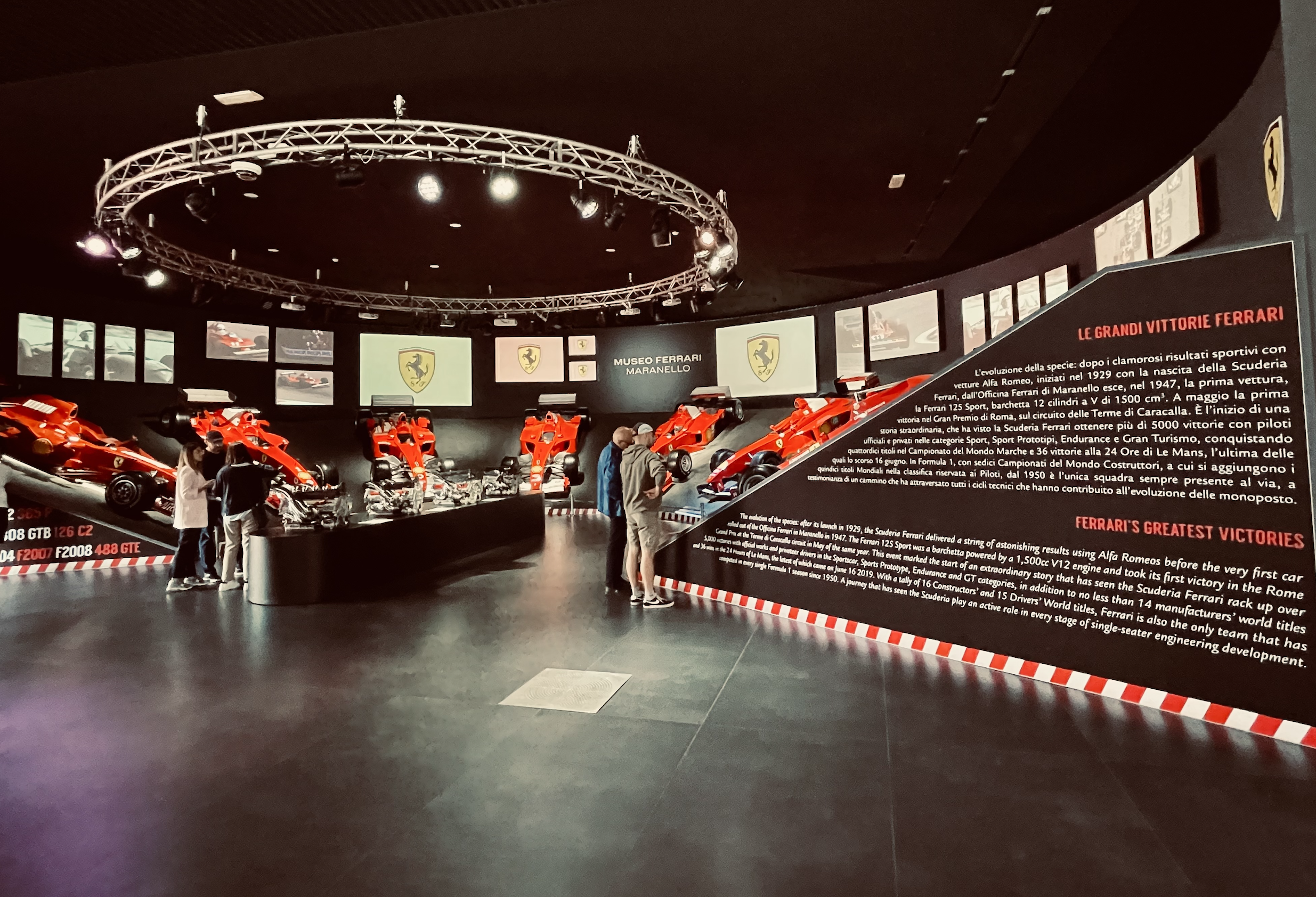
I summoned the wolf from the forest, because in the next, exceptional room, there is quite a spectacular collection of items related to the brand’s racing history. The cars are mounted on ramps, oriented with their front facing inward, with several small but powerful F1 engines scattered around, creating something like a temple surrounded by helmets and likenesses of F1 champions. The power of the racing heritage, the love of the Tifosi, and the craftsmanship of Enzo are all present. Once again, the room is filled with details and information.

In one of the corners, there are miniatures of all the F1 cars created by Ferrari, several F1 engines on display, and a collection of trophies won by their drivers.

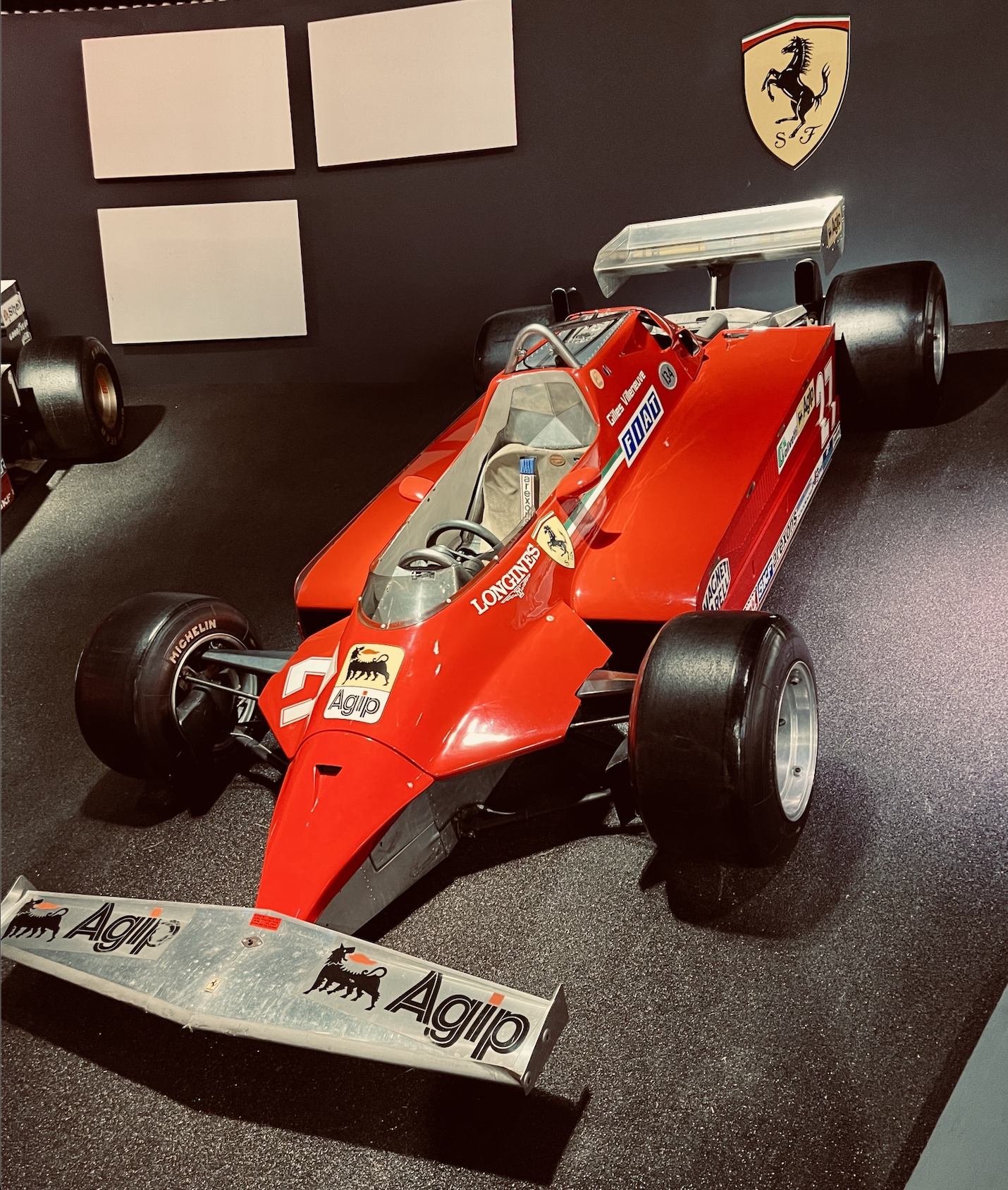
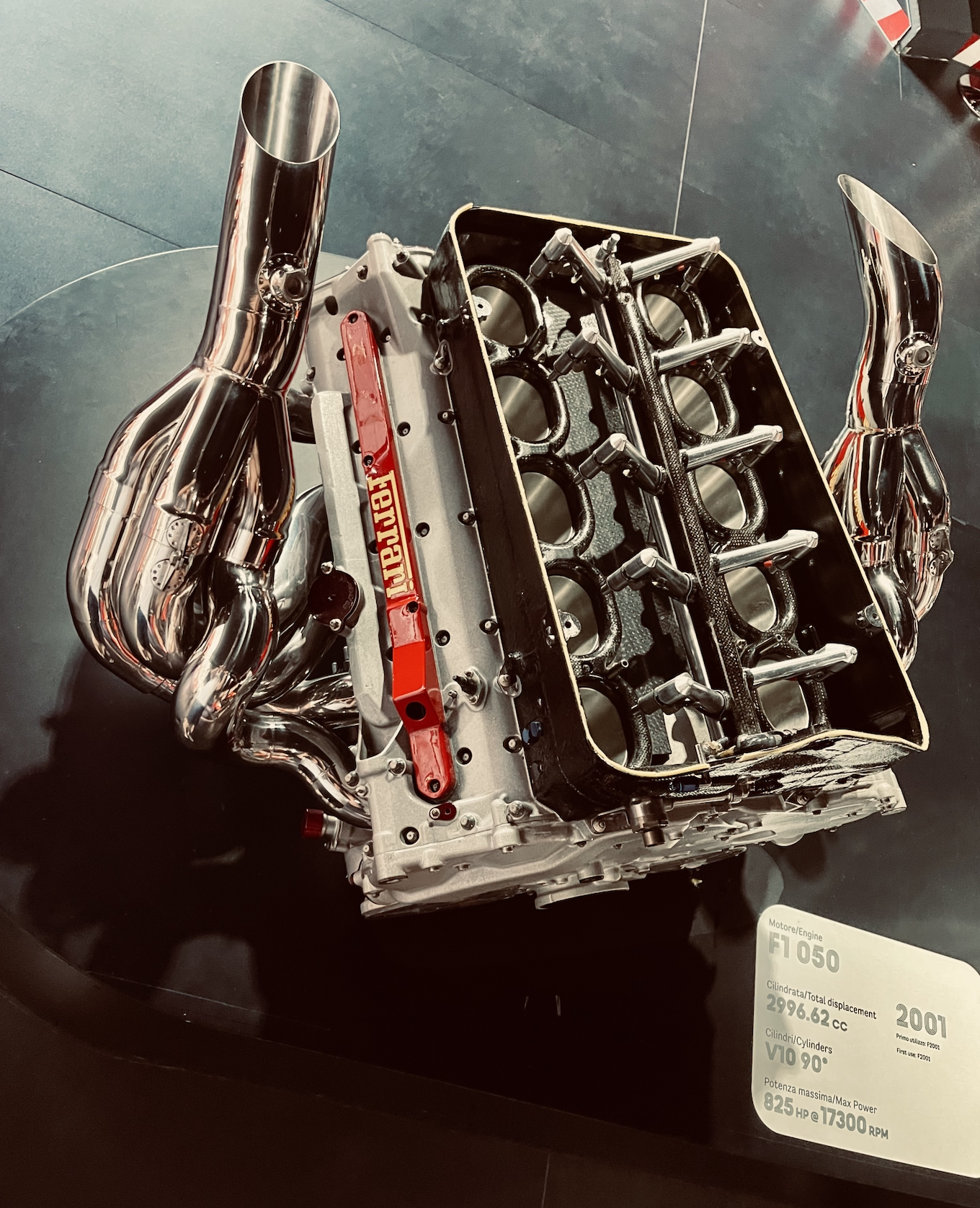
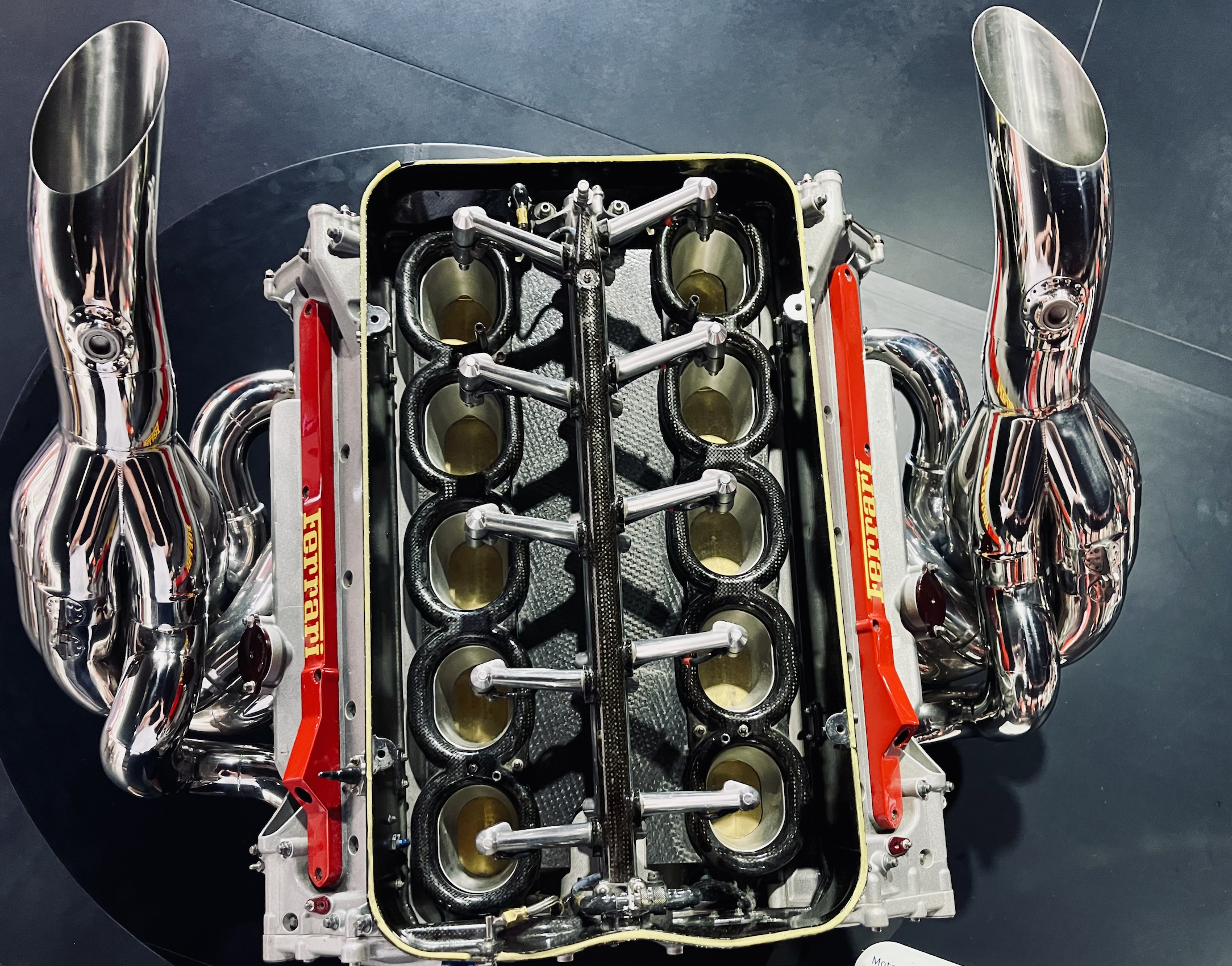
Heading toward the exit, I pass the 330 P4, two race cars, and the winning hypercar – the 499P with number 51, with which Ferrari won Le Mans... What an experience!
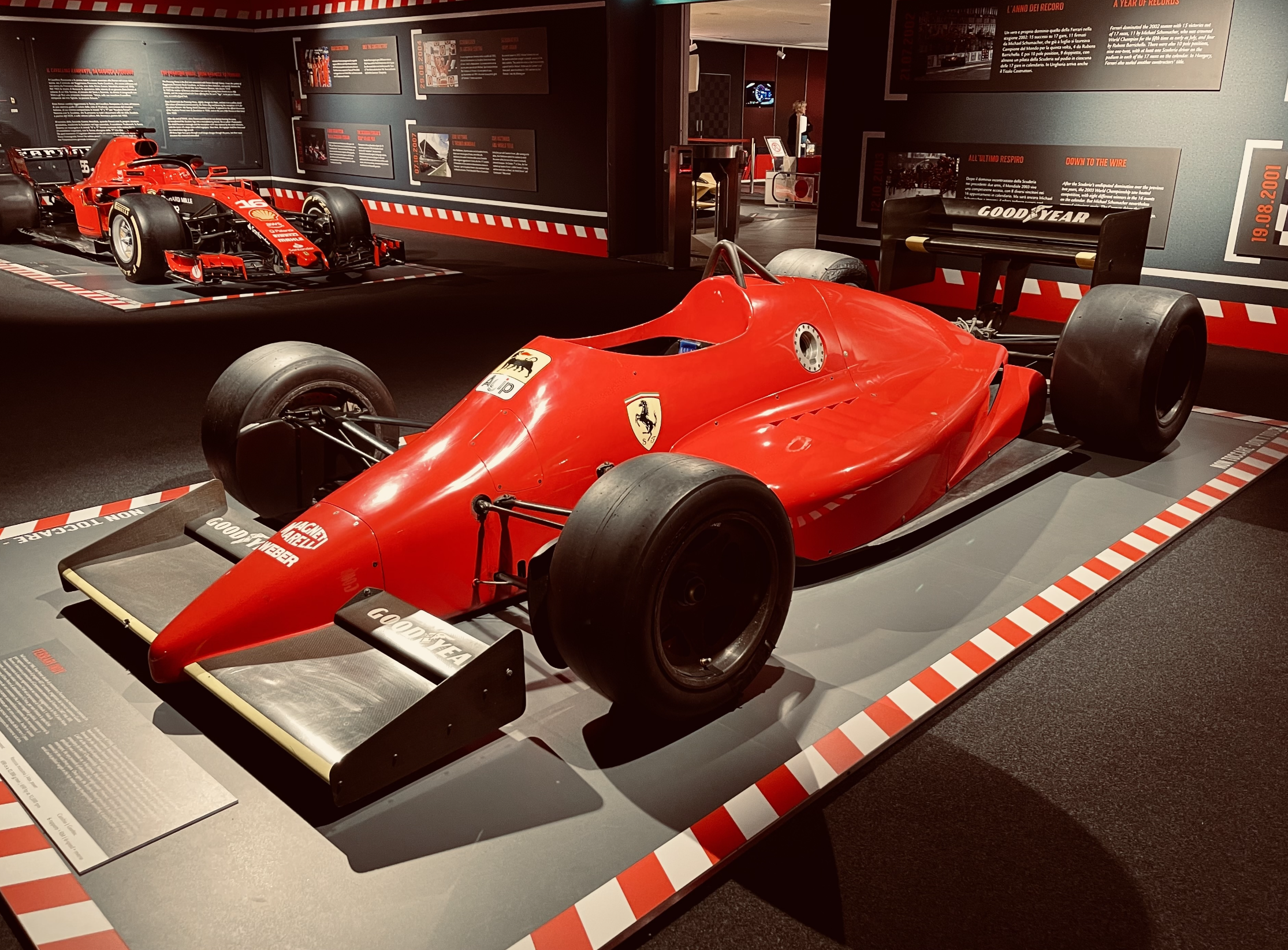
At the museum exit, you can also take a photo in an SF90, ride an F1 "motion" simulator, sitting in a cockpit modeled after a Formula 1 car, or pick up a souvenir at the vast store.
I highly recommend visiting the Ferrari Museum in Maranello when you're in this part of Italy. I’ve had the opportunity to visit museums and factories of brands like Mercedes and Volvo, but none of them can compare to Ferrari.
When leaving the complex, it's worth stopping by the Fiorano fence – you can catch glimpses of the track through it, allowing you to spot and hear true gems: former F1 cars or, like me, the FXX-K roaring at full throttle!
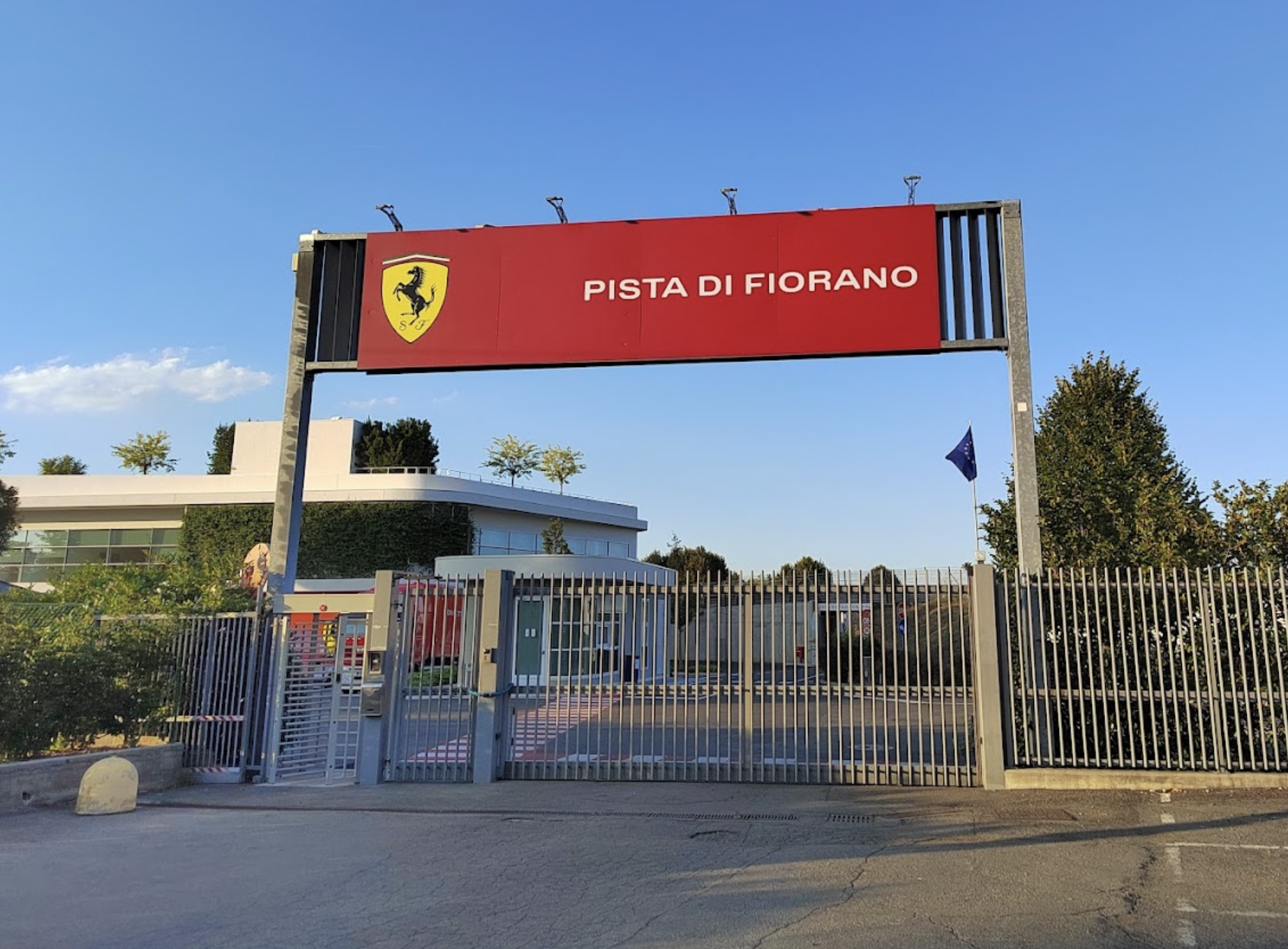
In the video, it's the Ferrari FXX-K EVO marked with the number 42.
On the streets leading to the museum, rental shops offering rides in one of several Ferrari models catch the eye. Did they manage to tempt me into a lap? Follow my profile, and you'll find out soon.



